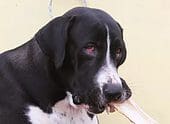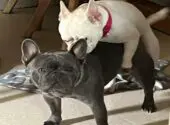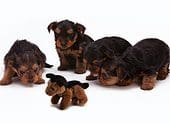Have you ever heard of the Bully Kutta? This intimidating name belongs to a fierce breed known as the Bully Kutta. This dog also goes by other names, such as Indian Mastiff and Pakistani Mastiff.
The dog’s strong physique and intimidating appearance can scare almost anyone. Standing anywhere from 28 to 36 inches tall and weighing between 130 and 170 pounds, the Bully Kutta makes the perfect guard dog.
But just because this breed can be fiercely protective of its owners doesn’t mean they are unruly and troublesome; quite the contrary! With patience and consistency, the Bully Kutta can be trained to be an obedient pet.
If you have what it takes to handle a Bully Kutta, read this article until the end.
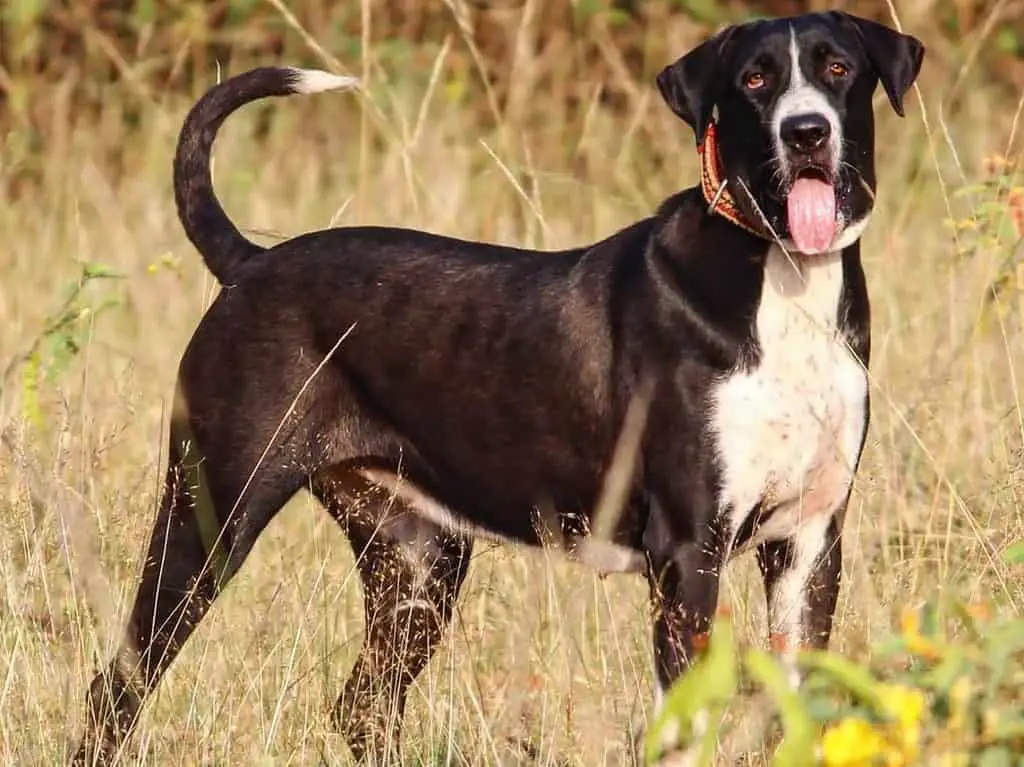
Quick Facts: Bully Kutta
Height
28 - 36Weight
130 - 170Lifespan
8 - 10Breed Size
extra large (more than 100 lbs.)Breed Type
purebredBreed Group
companionTemperament
aggressive, protective, strong-willed, active, intelligentGood With
familiesIntelligence
highShedding
infrequentExercise Needs
highBarking Level
highEnergy level
highDrool Amount
highCoat Type
short and dual-layeredCoat Patterns
bi-colorColors
black, cream, white, pied, brownOther Characteristics
easy to groom, easy to train, high potential for weight gain, high prey drive, highly territorialBully Kutta Highlights
- The term “Bully Kutta” describes a group of Alaunt Hounds that inhabit India and Pakistan, which bear many physical characteristics similar to modern-day Pitbulls.
- It is crucial for those who own a Bully Kutta to ensure this dog has enough space and opportunity for physical exercise.
- Given their temperament, raising those should only do a Bully Kutta with considerable experience in dog ownership.
- Bully Kutta dogs bark and drool a lot.
- Owners should provide Bully Kutta dogs with adequate exercise daily to ensure they reach their full potential. They may be strong-willed and thus should remain on a leash during walks for safety.
- When raised with proper respect for the family, the Bully Kutta offers unparalleled devotion to their owners and can get along surprisingly well with kids.
History
You may wonder how the large Bulla Kutta arrived on the scene. Though there are several theories, the most commonly accepted one is that the Bully Kutta is a descendant of the Alaunt. Developed over centuries by the migratory Alani tribe from Iran, the Alaunt breed has historically been noted for its use as a hunting and herding dog.
The members of the tribe brought along their canines on their journeys throughout Persia and past the borders. They specifically bred these dogs to assist them in hunting, engaging in battle side-by-side with horses, and safeguarding their dwelling sites.
For the past four centuries, the Alaunt breed has been extinct; however, their genetic legacy lives on through modern breeds throughout Europe and Asia that share similar size, protective behavior, and territoriality.
As the Bully Kutta has achieved tremendous popularity as a fighting canine in India and Pakistan, combined with its status among male admirers, there’s very little opportunity for this dog breed becoming extinct.
Appearance
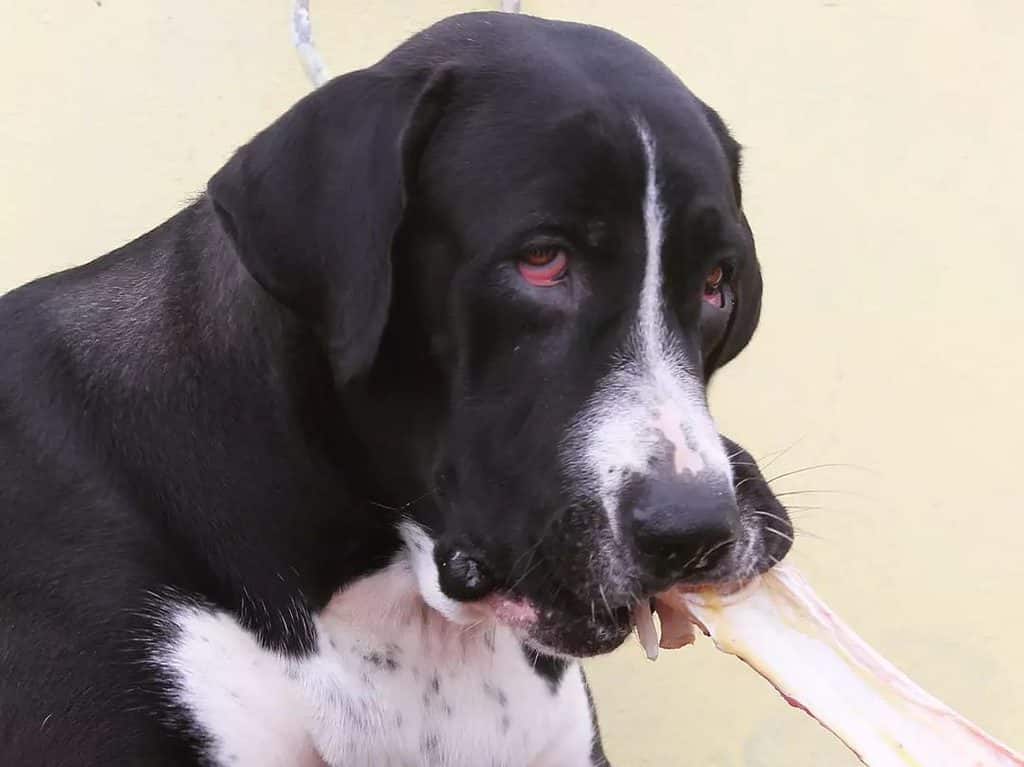

The Bully Kutta is a large breed with sagging skin and hanging lips that have secured them the title of a very wrinkly dog.
Bully Kutta’s noses are predominantly black; however, lighter shades of pink have been noted. Discoloration around the mouth or patchy pigmentation may also be present.
Unfortunately, owners of this particular breed often clip the ears to reduce their risk of infection and give them a competitive advantage in battles.
Bully Kutta Size
The Bully Kutta is exceptionally big, typically standing between 28 to 36 inches and weighing 130 to 170 lbs. Think of a Bully Kutta as an enlarged version of the Great Dane.
Bully Kutta Colors
The colors of the Bully Kutta breed can vary between white, black, brown, pied, and cream.
Coat
One of the most notable characteristics of the Bully Kutta is its short coat, which doesn’t shed often. This makes them much easier to groom and maintain than other breeds with longer coats.
Personality
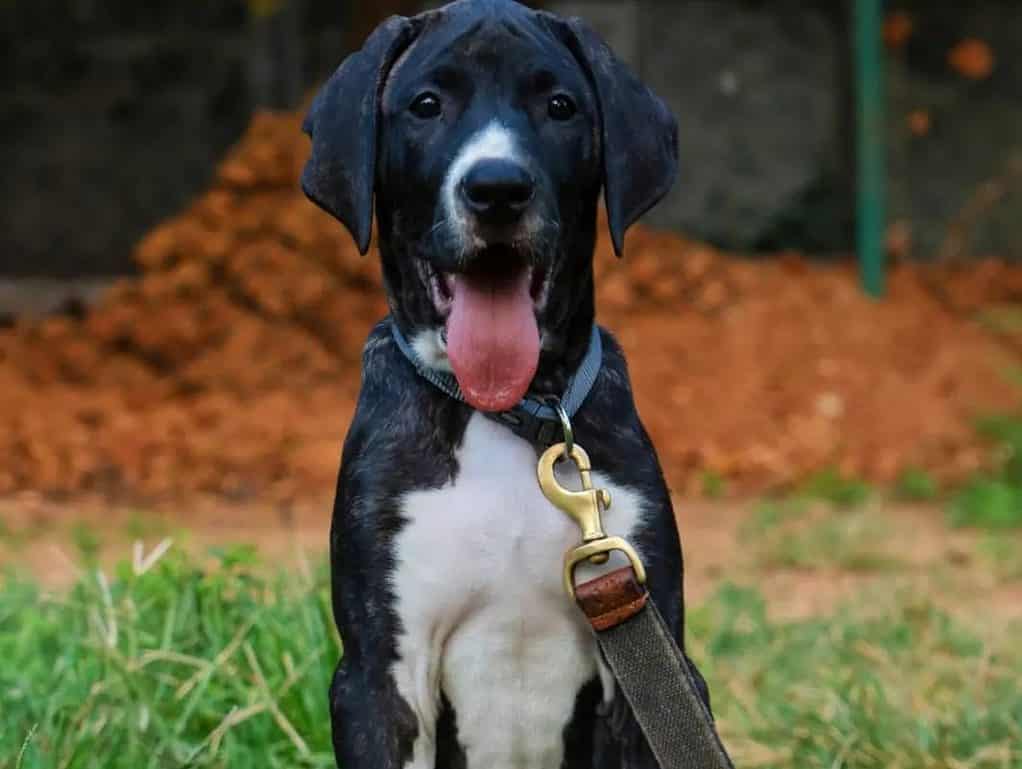
It is typically observed that a Bully Kutta will develop an attachment to one specific person and is often referred to as a single-person dog. When socialized with a family unit or group and provided with proper guidance, the Bully Kutta can develop relationships with multiple people.
Bully Kutta are big softies who love their owners to bits; however, if you are hosting guests for dinner, you must introduce them appropriately. Incidents wherein Bully Kuttas have attacked individuals who are unfamiliar to them are rare, yet remain a possibility.
More importantly, only those with significant prior breeding and training experience should accept a Bully Kutta’s responsibility. This type of dog requires a dominant owner in order to be kept under control.
Living with a Bully Kutta requires the establishment of dominance. These dogs will only obey commands given by those they deem their leader. To maintain the position of alpha, you should always lead your pup on walks or when out in public spaces. Remember that Bully Kuttas must remain on a leash in the presence of other dogs or people, as attacks may occur without proper restraint.
Maintaining dominance takes a considerable effort, and larger dogs with aggressive tendencies may take advantage of any sign of weakness. However, failing to remain in control will only result in their acting out more often.
Centuries of selective breeding have resulted in a tendency for Bully Kuttas to display aggressive behavior, even with proper conditioning. Taking a walk with a Bully Kutta will likely lead to the dog dragging you forcefully and creating a commotion from its loud barking, accompanied by excess drool exiting its mouth.
Bully Kuttas require a spacious living environment to thrive; inadequate space may result in the destruction of property and furniture, which is why they must be provided with a medium-sized yard.
Health
These dogs are comparatively healthy as a breed. However, as with many larger dog breeds, there is an increased risk of arthritis in older Bully Kuttas and Gastric Dilatation-Volvulus (Bloat) can also be a concern.
The Bully Kutta can also suffer from blindness and issues concerning their skin, such as allergies or infections. Be on the lookout for more intense itching, scratching, and skin reddening.
Ultimately, when it comes to keeping your beloved Bully Kutta healthy, there’s nothing more important than regular visits to the veterinarian. Not only will your pup get a thorough physical exam and vaccines at each visit, but it also provides an opportunity for you and your vet to discuss any issues or concerns related to your pup’s health or behavior.
Lifespan
The maximum age of the Bully Kutta breed is, unfortunately, only ten years, while the minimum is usually around eight years, a significantly shorter life span than many other large dog breeds.
Care
Bully Kuttas are considered to be working dogs in need of significant physical and mental stimulation for optimal performance. It is important to note that this breed does not have the same inclination other large breeds may have towards laziness and inactivity.
Allocate a minimum of 60 minutes daily to exercise, such as jogging or engaging in playful activities with your dog. Establish yourself as the alpha figure by being confident and leading the way.
Exercise your Bully Kutta off-leash at your own risk; make sure to confine them within a secure, fenced space.
Diet
This giant breed boasts a considerable frame and therefore, a large appetite.
Bully Kuttas should be provided with various food sources to ensure they receive all the essential nutrients they need. As noted, these dogs require abundant physical activity to remain healthy; thus, their diet must be sufficiently nutritious to support such a lifestyle.
You can incorporate small amounts of fruit and vegetables into their diet. But proper research should be conducted when selecting foods to ensure safe consumption.
Grooming
The Bully Kutta has a short, low-maintenance coat, making it an attractive candidate for pet owners looking for minimal grooming. Basic grooming is nevertheless required, including routine tooth brushing, combing, ear cleaning, and nail trimming.
Additionally, these dogs are prone to drooling in significant amounts. Appropriate bathing frequency is thus contingent on the owner’s standards of hygiene.
Bully Kutta Puppies
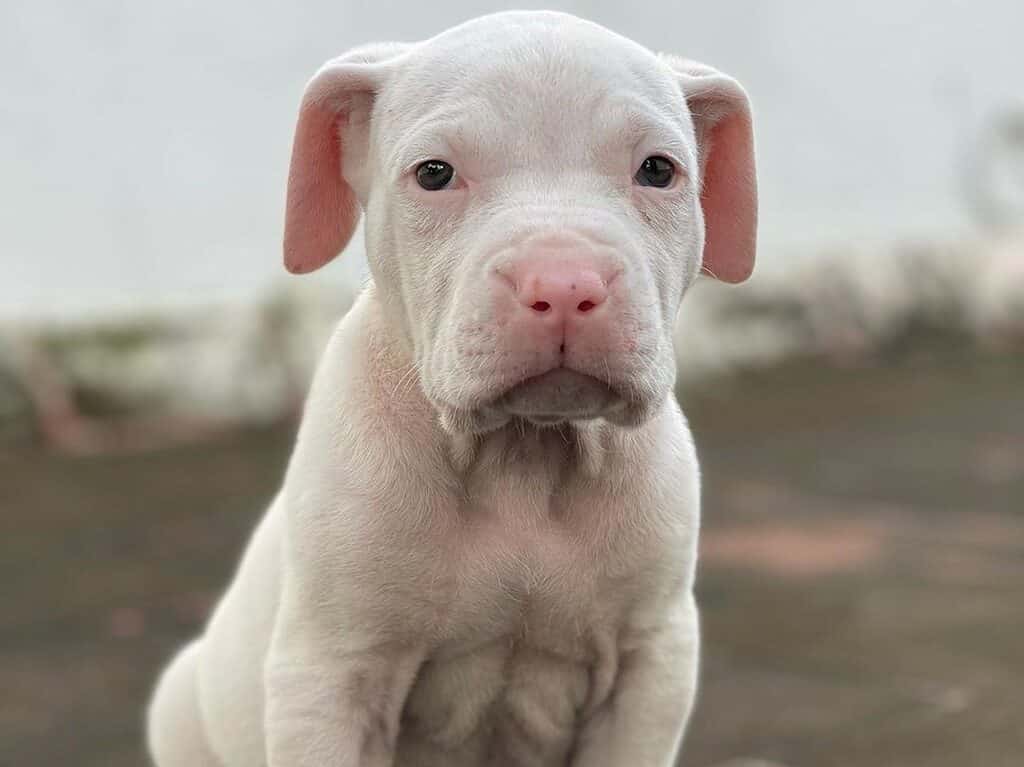
It is difficult to acquire a pure-bred Bully Kutta puppy in the United States, and one may find themselves settling for the American Bully instead. While not identical, the American Bully does share numerous characteristics with the ‘‘Beast from the East.’’
Bully Kutta puppies are not included in the list of most high-priced dog breeds. The cost for one pup usually falls within the range of $1000-$1500; if bought in India, the price will be significantly lower.
Children and Other Pets
The Bully Kutta’s disposition prominently feature aggression, and they take pleasure in fighting, an aptitude they exhibit remarkably well. Smaller canines and cats appear to be easy prey.
Do not house two Bully Kuttas in a close setting as they are prone to fighting. Furthermore, do not get this breed if you already have small pets.
Despite their large size and potential for aggression, the Bully Kutta can be a suitable choice for families. Not only are they tolerant of children, but they also demonstrate playful characteristics.
These dogs exhibit a high degree of intelligence. This may manifest in a strong-willed temperament and the occasional boredom due to lack of mental stimulation; however, such intelligence generally makes for an engaging companion.
Rescue Groups
There aren’t many rescue groups dedicated solely to Bulla Kuttas. If you’re in luck, you may find these dogs in the following:
Bully Kutta FAQS
Are Bully Kutta dogs intelligent?
Bully Kuttas possess remarkable intellect and adaptive capabilities, making them easily trainable with proper dedication and effort.
Do Bully Kutta dogs bark a lot?
Bully Kuttas are known for their exceedingly vocal nature, often producing loud barks when perceiving a possible threat or intruder.
Do Bully Kutta dogs make effective guard dogs?
With proper training, socialization and supervision that comes with owning any large-breed dog, the Bully Kutta can make an excellent guard dog for many households. They will never hesitate to bark at strangers if they feel threatened or believe their family is in danger.
Do Bully Kutta dogs drool a lot?
With the Bully Kutta’s impressive exterior comes a lot of drool. You should be prepared for those sloppy kisses and have some napkins ready.
How long do Bully Kutta dogs live?
The average lifespan of this breed is 8 to 10 years.
Bully Kutta Fun Facts
- The Bully Kutta is commonly referred to as the Alangu Mastiff, however, they are separate breeds.
- The Bully Kutta goes by several names: PBK, Bully, Pakistani Mastiff, Bongay Bully, Desi Bully, Tulla Bully, South Asian Mastiff, Pakistani Bully Dog, Bully Cutha, Sindh or Sindhi Mastiff, Indian Alangu Mastiff, Indian Mastiff, Alangu Mastiff, and Indian Alangu Mastiff.
- The word ‘bully’ is derived from the Punjabi word ‘Bholi’, meaning exhibiting deep wrinkles or a highly wrinkled appearance. The term ‘Kutta’ simply refers to an animal classified as a dog.
References
Marchevsky, A. M., & Read, R. A. (1999). Bacterial septic arthritis in 19 dogs. Australian Veterinary Journal, 77(4), 233-237.
Nash, H. Bloat (Gastric Dilatation and Volvulus).

